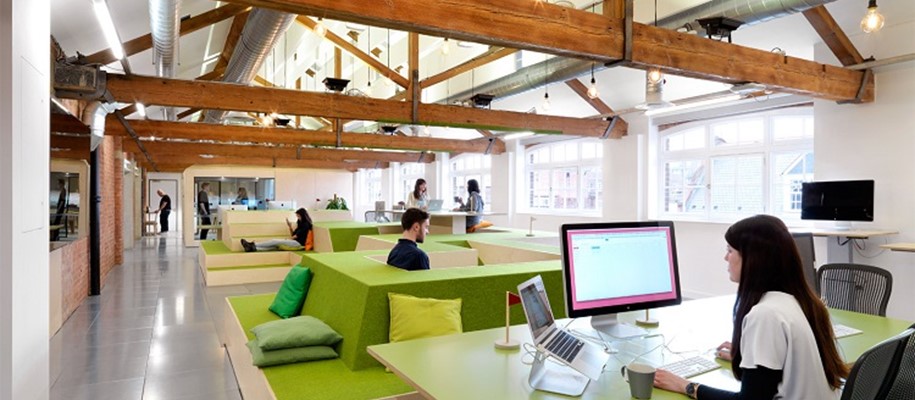Infographic Transcript: Office Design Wars - Which Style Is Truly The Best?
Workplace Satisfaction & Productivity
The most desirable elements for an office space are:
- Natural light
- Live indoor plants
- Quiet working area
- View of the sea
- Bright colours
24% of workers claim Google is the biggest online time-waster, with 23% blaming Facebook.
89% of employees admitted they waste time at work each day.
60% of UK workers are happy in their jobs.
53% of employees said they waste time because they believe short breaks actually increase productivity.
36% of employees need between 1 ½ - 2 hours per day just to manage their emails.
Office Cubicles
Robert Propst designed the office cubicle in the 1960s. Originally designed to ‘save us’ from the pre-1960s offices of old (the ones where all the desks were lined up & facing the same direction like a school classroom). Cubicle workers are the most unhappy employees.
Pros:
- A sense of privacy
- Fewer distractions from co-workers
- Cubicle walls are re-configurable
Cons:
- Cubicles offer the illusion of privacy, not the real thing
- More likely to partake in unsolicited distractions (social media, etc), unnoticed
- Reduces collaborative working
Open Offices
Ideal for maximising a company’s space while minimising costs. Bosses love the ability to keep a closer eye on their employees. However, employees coming from more traditional office layouts find it difficult to adapt to open-plan offices.
Pros:
- Social working environment
- Promotes a more team-based culture and encourages a more collaborative atmosphere
- Tears down hierarchies
Cons:
- Lack of privacy
- Increased noise levels
- Easily distracted by co-workers
Enclosed Offices
Workers in enclosed offices are the happiest, reporting the least amount of frustration.
Pros:
- Privacy and ability to shut your door
- No noise, while helps concentration and decreases stress levels
- More room/space
Cons:
- Less social interaction
- Lack of motivation - no ‘pressure’ of being watching
- Reduced collaboration between coworkers
Working From Home
There were 4.2 million UK home workers in the first 3 months of 2014, amounting to 13.9% of the workforce. 1 in 4 of us would accept a reduction in salary if it meant we could work from home.
Pros:
- Proven to boost productivity by up to 13%
- Fewer interruptions
- Complete control of your working environment
Cons:
- Lack of focus and/or motivation
- Lack of social interaction with co-workers
- Out of sight, out of mind; alienated from company developments






